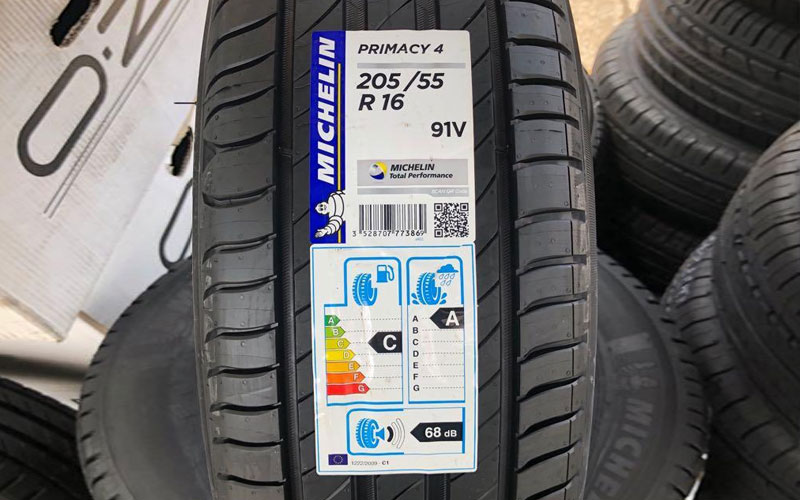Search Tyres by Vehicle Registration
Are you looking for Tyre Labelling for your vehicle?

Since the 1st of November 2012, the labelling of tyres has been mandatory in the EU. The so-called EU tyre label provides consumers with information on the performance of tyres in terms of rolling resistance, wet grip and noise and should serve as a guide for any purchase decision of tyres.
What is especially relevant for you as a customer?
- Wet grip ≙ braking distance.
18 m difference between best and worst classification.
- Rolling resistance ≙ fuel consumption.
6.6 l / 1000 km difference between best and worst classification.
- Rolling resistance (fuel consumption)
Similar to the energy efficiency of household appliances, rolling resistance is given on a scale from A to G on the EU tyre label, with D not shown. A stands for the lowest and G for the highest rolling resistance.
By reducing the rolling resistance, fuel consumptionis less and so is the CO2 output. When a tyre is in motion, it deforms and uses up energy. The heavier the tyre falls, the more energy it needs. With less rolling resistance, less energy is needed to use less fuel and thus emit less CO2.
An improvement of one class within the EU tyre label means a saving of approximately 1 to 1.5 litres of fuel per 600 miles.
- Wet grip (safety)
Decisive for the safety during driving is, among other things, the wet grip of the tyres. In the EU tyre label, the wet tyre properties are subdivided into classes A to G, whereby D and G are not covered.
The braking distance difference from one class to the next is on wet roads at an initial speed of 50 mph between 3 and 6 meters. That means, between one or two carlengths. Overall, the braking distance difference between class A and F is over 18 metres.
- Noise classification (external rolling noise)
The noise emission of the tyres affects the overall volume of the vehicle and not only affects the comfort of driving, but also the noise pollution of the environment.
The level of this noise is given on the EU tyre label in decibels and in the form of one to three sound waves. A sound wave means that the tyre has the lowest noise level. For car tyres, this is between 67 and 71 dB. The range of noise classes results from the different tyre width. For example, while 67 dB refers to narrow tyres, 71 dB is for wide tyres. The highest noise level for cars is between 72 and 76 dB and is represented by three sound waves. Experts are of the opinion that already a difference of 1-2 dB is perceived by the human ear.
What does the EU tyre label say?
The EU tyre label aims to increase consumer awareness of fuel efficiency, wet safety and environmental compatibility. Other important properties of tyres are not taken into account in this EU tyre label. Thus, the label offers no information about life, driving stability, aquaplaning properties, braking properties on dry roads and especially the driving characteristics in winter conditions.
